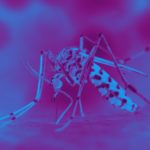Lien vers Pubmed [PMID] – 27182597
PLoS Negl Trop Dis 2016 05;10(5):e0004639
BACKGROUND: Elimination of Plasmodium vivax malaria would be greatly facilitated by the development of an effective vaccine. A comprehensive and systematic characterization of antibodies to P. vivax antigens in exposed populations is useful in guiding rational vaccine design.
METHODOLOGY/PRINCIPAL FINDINGS: In this study, we investigated antibodies to a large library of P. vivax entire ectodomain merozoite proteins in 2 Asia-Pacific populations, analysing the relationship of antibody levels with markers of current and cumulative malaria exposure, and socioeconomic and clinical indicators. 29 antigenic targets of natural immunity were identified. Of these, 12 highly-immunogenic proteins were strongly associated with age and thus cumulative lifetime exposure in Solomon Islanders (P<0.001-0.027). A subset of 6 proteins, selected on the basis of immunogenicity and expression levels, were used to examine antibody levels in plasma samples from a population of young Papua New Guinean children with well-characterized individual differences in exposure. This analysis identified a strong association between reduced risk of clinical disease and antibody levels to P12, P41, and a novel hypothetical protein that has not previously been studied, PVX_081550 (IRR 0.46-0.74; P<0.001-0.041).
CONCLUSION/SIGNIFICANCE: These data emphasize the benefits of an unbiased screening approach in identifying novel vaccine candidate antigens. Functional studies are now required to establish whether PVX_081550 is a key component of the naturally-acquired protective immune response, a biomarker of immune status, or both.

